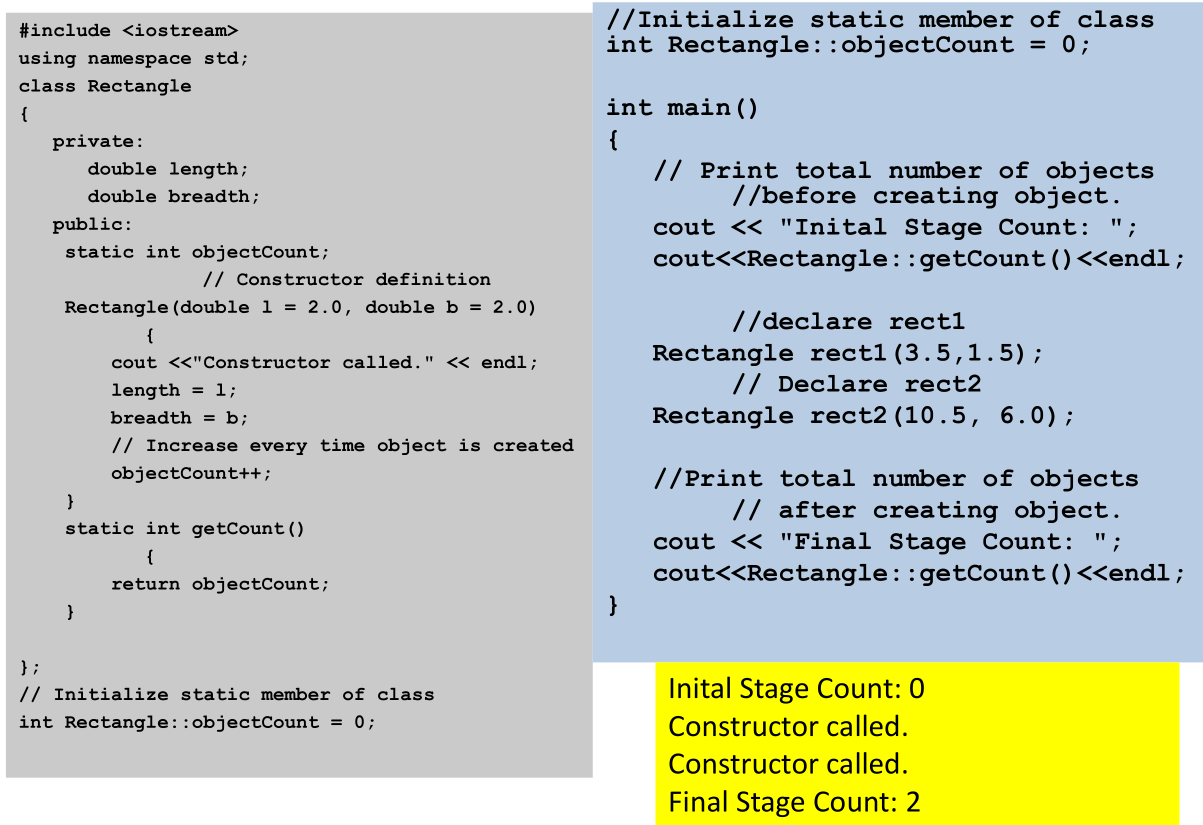Static Data Member
• When a class is instantiated, memory is allocated to the created object by constructor.• The memory allocated to object is equal to the total size of data members defined in class.
• Storage space for the data members which are declared as static is allocated by once during the class declaration and definition of static members.
• All the objects of this class have access to this data member, that is all instances of the class (objects) access the same data member.
• When one of them modifies the static data member, the effect is visible to all the objects.
Memory allocation for members
• Thus each object has a separate copy of the automatic data members and they share static data members among them.
Static Data Member continue…
• The type and scope of each static member variable must be defined outside the class definition.• This is necessary because the static data members are stored separately rather than as a part of an object.
• Since they are associated with the class itself rather than with any class object, they are also known as class variables.
Static Data Member(syntax)
• The static data members of class are declared inside the class with keyword static as,Static Data Member: Example
Access Rule for static data member
• If data member are public static, then they can be accessed by using :: operator or member access operator through objects asStatic Member Function
• A static function is one which is declared as static in a class.• A static member function can only access static data member, other static member functions and any other functions from outside the class.
• By declaring a function member as static, we make it independent of any particular object of the class.
• A static member function can be called even if no objects of the class exist and the static functions are accessed using only the class name and the scope resolution operator ::.
• Till now, we knew that the private member data of a class can be accessed only by member functions of that class and not by the object outside the class.
• But there is one exception- A friend function
• A friend function is a function that is not a member of a class but declared as friend inside the class either in private or public section.
• The definition of function is always made outside the class as a non member function.
• The friend function can access the private members of a class since it is declared as friend inside class.
• It can work as a bridge between two or more classes by declaring it as friend into multiple classes.
• The declaration and definition of friend function can be written as :
Friend Functions: An Example
Friend Class
• Like a friend function , a class can be made friend to another class by declaring it inside the class to which it has to be made friend.• The declaration of class as friend can be done as :













0 Comments